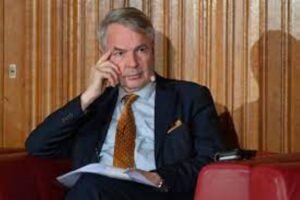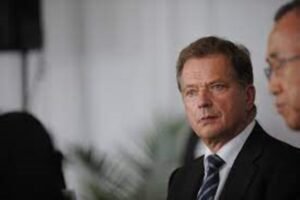On Sunday, Finland held its presidential elections with a focus on the shifting geopolitical environment of Europe, especially in the backdrop of increased tensions with Russia. As head of state, the presidency is important even if its powers are limited. It is the highest commander of Finland’s armed forces and works with the government to determine foreign policy.

There were nine contenders for the presidency with the top contenders being the Green Party’s Pekka Haavisto and Alexander Stubb, the former prime minister and conservative. The leading candidates were the independent Haavisto and the conservative Stubb. The far-right Finns party’s Jussi Halla-aho was thought to be a candidate for the runoffs.
Finland’s Response to Russia
Following Russia’s 2022 invasion of Ukraine, Finland and Russia’s ties deteriorated. In response, Finland which had for decades maintained a military posture of non-alignment joined NATO in April 2023, which ultimately led to Russian threats of “countermeasures.” The change in military strategy was a major divergence from Finland’s post-Cold War strategy.

Migration Challenge and National Security
To make matters worse, by August 2023, Finland was experiencing a wave of undocumented migrants entering the country through its eastern border. Helsinki claimed Moscow was planning a hybrid attack to cause instability in the nation by making use of migrants. Finland responded by closing its eastern border in November, claiming national security concerns. The presidential campaign revolved around the issue of migration, with contenders stressing the need to put Finland’s security first especially after what they saw as Russia’s manipulation of migration flows.
The front-runners offered different strategies for handling Russia. Stubb argued for prioritising Finland’s security and highlighted the use of migrants as a “ruthless, cynical measure”. Haavisto emphasised how critical it was to make it very evident to Russia that these kinds of activities were not acceptable.
Strategies Towards Russia
During the post-Cold War era, incumbent President Sauli Niinistö, who had two six-year terms, developed tight ties with Russian President Vladimir Putin, but over time, he became one of Putin’s most vocal challengers. With Niinistö’s end of term, Finland will have a new leader navigating NATO and upholding diplomatic ties in a shifting geopolitical environment.

Each contender emphasised the value of defence self-sufficiency and voiced support for Finland’s recent membership in NATO. The election was centred not only on the candidates’ stances on policy but also on their credibility, personality, and perceived abilities as foreign policy leaders.
According to a poll conducted by public broadcaster Yle, Stubb received 27% of the vote in the first round, ahead of Haavisto (23%), Halla-aho (18%), and others. On February 11, a second round of voting will take place if no candidate receives more than 50% of the vote in the first round.
Even though the candidates’ political philosophies were similar, the election turned into a contest between the candidates, and voters evaluated each candidate’s dependability, credibility, and perceived leadership abilities. The election’s result is anticipated to have a big impact on the country’s foreign policy, especially when it comes to handling its membership in NATO and relations with Russia. Finland’s leadership trajectory may be significantly shaped by the discussions that precede any further second round.










